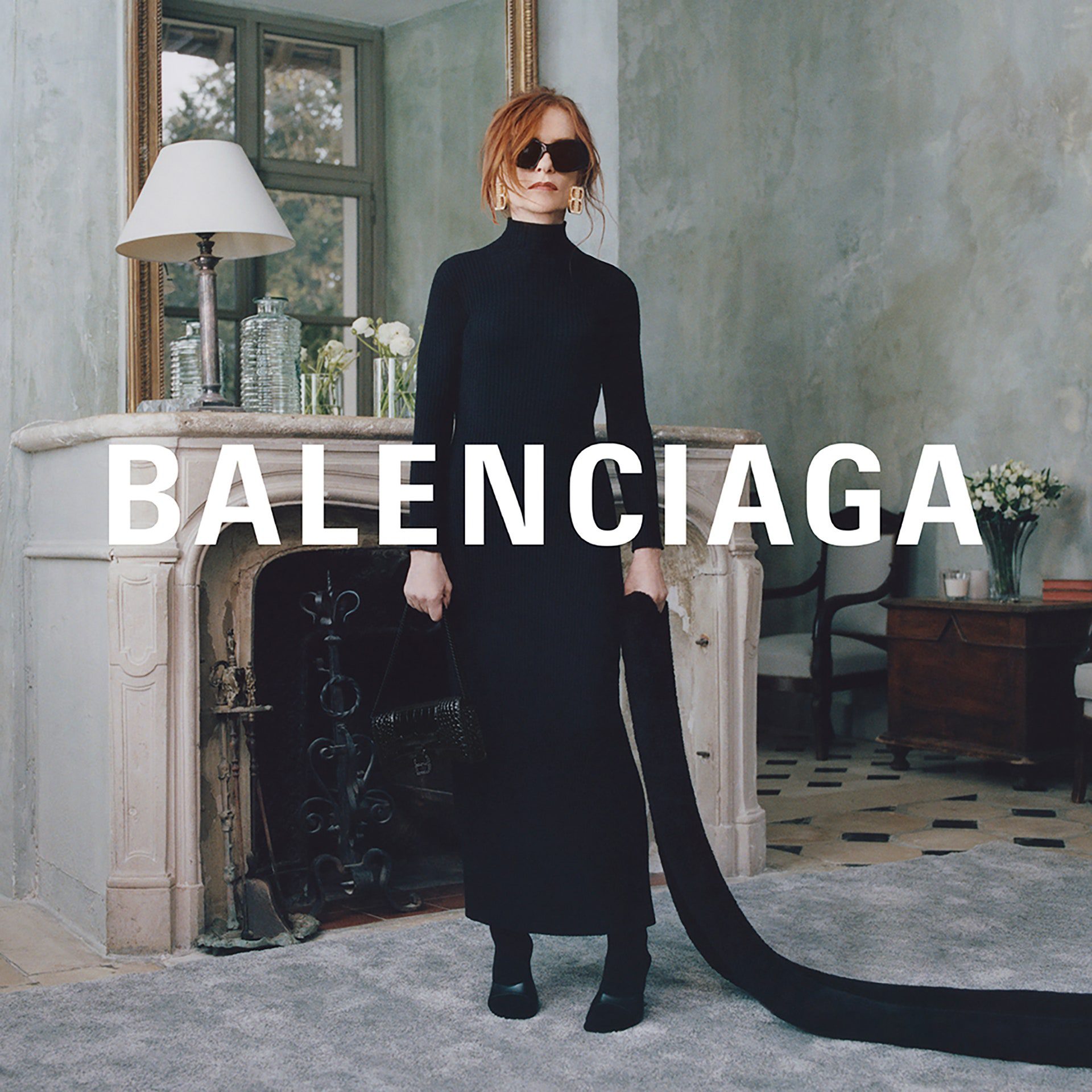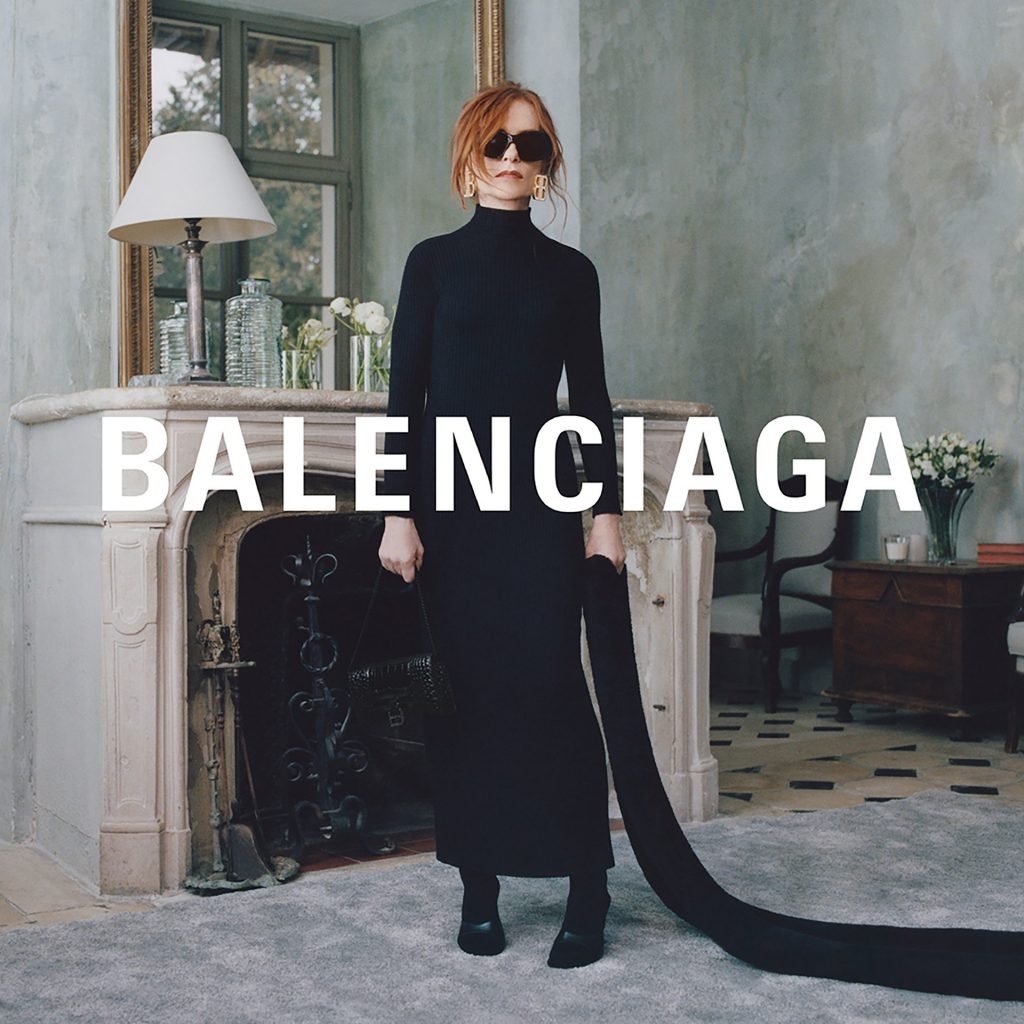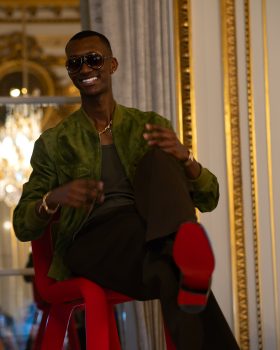Balenciaga, once helmed by Georgian designer and Vetements founder Demna Gvasalia, has always been a cult luxury fashion brand. Its popularity graph is, once again, rising due to a marked emphasis on postmodern irreverence and a conceptual interrogation of what high fashion can and should be.

The story of Balenciaga traces back to the early 20th century, when Cristobal Balenciaga innovated traditional couture with creative and intelligent inflections on shape and form. Per Vogue, “The woman who owns a single Balenciaga, the woman who has never owned an original—both have been converted to the enduring greatness of The Idea. The informed cutting, the superb construction inside and out. The colors of the bull ring… [Cristobal Balenciaga’s] serene loyalty to established themes with the subtlest variations. The use of tonality… [He] combines with drama—for which he has a Spaniard’s quick sensitivity—a worldly sense of discretion. His high standards have created a new level of excellence that reaches everyone.”
Born in a fishing village in the Basque region of Spain in 1895, Balenciaga began his career in fashion as a tailor in Madrid. In 1937, he moved his business to Paris. Balenciaga’s pre-teen training ensured he was a hands-on couturier and pattern-cutter, but it was his sheer originality and creativity that ensured his legacy. His design aesthetic has always been compelling, particularly in pattern-cutting — Balenciaga engineered a one-seam coat — theatrical draping and bold colour.
The sack, the babydoll and the balloon dress are just some of his creations. A century onwards, and the brand remains on-trend, with projects becoming bolder and more experimental. Current head designer Demna understands how Generation Z is thinking — and where he can take it from there. Last year, Balenciaga and Epic Games announced a collaboration to bring the brand’s apparel into the world of video games.
Fortnite characters are now clad in looks from Balenciaga’s latest collections. Interestingly, the partnership has physical manifestations, including a fashion campaign and a line of merchandise. Shortly after, Demna Gvasalia struck again. While presenting Balenciaga spring-summer 2022 at Paris Fashion Week, he dropped a never-before-seen episode of The Simpsons, with characters Marge, Homer, Bart, Lisa and the rest of the cast wearing the newest looks.
Per GQ, “this mix of genres and cultures is an integral part of Balenciaga’s winning strategy. Indeed, the brand has understood that Gen Z — the new prime target for luxury houses — wants neither pigeonholes nor stereotypes. The success of the brand at the last MET Gala shows that Balenciaga is all over the red carpet. And that’s not to mention Balenciaga’s collab with the same Kanye ”Ye” West during the release of ‘Donda.’ These gambles may seem crazy at first glance, but they’re winning on all fronts, since the luxury house has evidently never been so popular…”
That’s not all. The French luxury brand has the memo on sustainability. Balenciaga Spring Summer 2021 was environmentally friendly due to its focus on up-cycling and repurposing. For Demna, it seems that “fostering the values of sustainability is a two-pronged affair—and streetwear is his chosen medium,” writes Weiqi Yap in Vogue. “As sustainability increasingly finds its way into more designer collections, clothes designed with the planet in mind no longer have a singular aesthetic. And for Balenciaga, they look a lot like a playful disregard for the gender binary, and old-school pieces that stand the test of time.”
Demna is building on the legacy of the Balenciaga label to make it the most relevant and coveted luxury brand today. Alessandro Michele, the head designer at Gucci, told Vogue, “I like that [Demna’s] in search of a different kind of beauty, particularly in an industry that has always tried to define and dictate beauty in the past.” The latest instalment in the Demna-for-Balenciaga franchise is a pair of tattered converse sneakers, a deliberate affront to traditional notions of good taste and an invitation for all of us to reconsider what we deem aesthetically pleasing – and, indeed, fashionable.
As when Miuccia Prada pioneered the geek chic look in the mid 90s, Demna’s unapologetic rejection of classical standards is reinventing the landscape of luxury and the wardrobes of the shiny set. His artistry may be lost on some; but the story of Maison Balenciaga is steeped in revolution, from the founder’s daring designs to Nicolas Ghesquière’s late 90s revival of the house through collage and eclecticism. In the grand scheme of Balenciaga history, Demna’s innovations are not only a brilliant marketing technique, but a true salute to the original Balenciaga M.O. For all the wanton irreverence of his clothing, Demna’s approach is deeply respectful and perceptive of his maison d’hôte.
But where does Demna’s own penchant for revolution come from? His past as a war child, fleeing his home country of Georgia at the age of twelve during the civil war, may well have instilled in him the practical, astute fearlessness, creativity, and audacity to dare. Unlike those in the fashion coterie keen to avoid political commentary, Demna addressed Russia’s invasion of Ukraine head-on in his Winter 2022 show, where models walked against the gusts of an artificial snowstorm. Even when he’s not being political, Demna’s upending paradigms with tongue-in-cheek imagery and nods to fashion’s more puzzling idiosyncrasies. One of his more entertaining riffs on fashion in recent years was to feature a fake hotline number on men’s shirts in his Autumn 2018 collection.
As he blurs the the boundaries between fashion, art and social commentary, so Demna also blurs those between high end designer clothing and streetwear. He’s not the first to do so, of course; but his own approach is so uniquely cheeky and self-aware that it feels fresh and new – at least to those in the know. That’s what’s kept Balenciaga so hot in the past few years. Those who get it, get it. And those who don’t know they’re missing out on something. And it’s that something – that je ne sais quoi – that makes the brand so identifiably special.
Jasmeen Dugal is Associate Editor at FashionABC, contributing her insights on fashion, technology, and sustainability. She brings with herself more than two decades of editorial experience, working for national newspapers and luxury magazines in India.
Jasmeen Dugal has worked with exchange4media as a senior writer contributing articles on the country’s advertising and marketing movements, and then with Condenast India as Net Editor where she helmed Vogue India’s official website in terms of design, layout and daily content. Besides this, she is also an entrepreneur running her own luxury portal, Explosivefashion, which highlights the latest in luxury fashion and hospitality.










